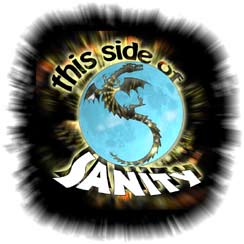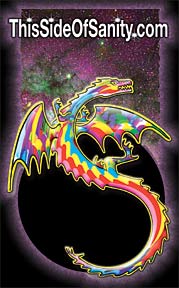
|
This Side of Sanity RSS News Feed 


 |
song form
This Side of Sanity
writing in song form
Songs (lyrical poetry) was invented by Sappho of Lesbos. Previously in the Greek culture, poetry could only be religious. Sappho broke tradition to write song lyrics about her own personal feelings. Sappho wrote verses to sing to her many lovers, ╩young women that rich parents paid to have Sappho teach. We get the modern English word lesbian from Sappho.
Sappho’s invention (song lyrics) was so great that shortly after her death she was deified as the ninth Muse (before you comment on a supposed mistake, I know there are myths of an alternative ninth Muse).
Folk songs developed after Johann Sebastian Bach invented Western music. The common people needed a less expensive form of music than the expensive chamber and orchestral Classical, Baroque, and Romance music.
Folk songs were based on field work’s call and response. A chorus was added to the verses using the idea of call and response, with the chorus responding to the verse. The origin of the chorus was in ancient Greece, where the chorus represented the public will and commented on a theatrical play as it was performed.
Musicologists call this two part song form AB. A stands for the verses. B stands for the chorus. This is a reference to the melody only, not the words or the chords.
The verses are lyrical poetry expressing the singer’s personal view, emotions, feelings, and thoughts, while the chorus is the public group response.
Modern choruses contain the song’s hook and are the place where the general public connects emotionally to the personal artistic expression of the singer.
Traditionally, the chorus only needed to be an answer to the verse. It didn’t have to vary much. Many old folk songs feature verses and choruses that are very slight variations of each other.
Jazz musicians of the early 1900s prided themselves on having inventive variations between their verses and choruses.
Kurt Cobain of Nirvana transformed pop music by having moody, quiet, often acoustic verses, contrasted with high energy, loud, distorted choruses. The classic example is “Smells Like Teen Spirit” .
Typically an instrumental lead solo is performed over either the chords of the verse or the chords of the chorus. A musician invited to play a guest solo on an original song in a live performance will often ask “solo over verse or chorus?” Sometimes the lead solo is played over a third, different chord progression, sometimes called a bridge.
Sometimes a song has a bridge that introduces a third vocal part. In recent decades this kind of bridge has often been used to introduce a rap.
Song writing summary: express your personal beliefs or feelings (verse), then have a strong musical hook for the public’s response to the stated belief or feelings (chorus).
COMMENTS
The typical length of a modern pop song is a result of the limitations of a 78rpm record. It turned out to match the average attention span, too. ;)
—Steve Mills
Hi,
Thank you for the write. Interesting one.
Regards,
Chalam








